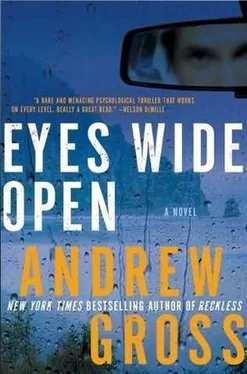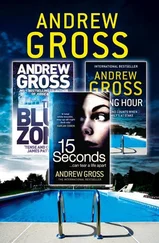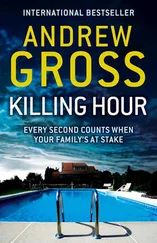My mind immediately darted back to the person in the car outside Charlie’s apartment. She was in a drawn-down cap. Behind a car window.
Then she tossed out her butt at me.
“But you think it’s true.” My blood was hard to hold back. “You must, or else you wouldn’t be here.”
“What I think, doc-and trust me, it’s all I’m thinking-is that it’s worth checking out. Just too bad you had to be heading home today, after investing all this time. Would’ve been nice to have the company.”
My face edged into a grin, a surge of anticipation filling me up expansively. Sherwood never once changed his expression. He only twisted his face up at the half-stale muffin. “This is what you eat every day?”
“How did you find out where she is?” I asked.
“California Department of Corrections. I have made a few buddies washing my hands of things over the past twenty-five years. While technically she’s not on parole, the state requires a convicted felon to file a place of residency. Jenner’s just a dot on the map. A tiny fishing village. Maybe four, four and a half hours from here.”
“What are you telling your boss?” I asked him. I thought of the stack of unresolved cases on his desk.
“Less the better.” He smiled at me. “What are you telling yours?”
“That maybe she was right.” I smiled at him as well. “Maybe the sun out here has made me a little dizzy.”
“What sun?” Sherwood got up, dropped the rest of the muffin back on my tray with a twist of his mouth. “How about seven A.M. then? In front of the hotel. And in case there’s any doubt, I’ll bring breakfast.”
I took the easy way out and left a message for Kathy, saying I needed one more day.
I told Charlie and Gabby optimistically that some things were up with Evan’s case. I canceled my appointments. My partners were probably starting to think I was crazy too.
I spent a lot of the rest of the day in my room, online.
I wanted to find out everything I possibly could about Russell Houvnanian. How he had gotten those people to commit the horrible acts they had. How Susan Pollack had fit in.
There was a ton of material online. Several books had been written on the case-one by an FBI investigator, Thomas Greenway, who had gone on to achieve some notoriety. Others by various journalists and criminologists, and even by a few of Houvnanian’s followers. I found articles going back to the 1970s. I devoured them like the medical background to a baffling case, fascinated by how Houvnanian had been able to lure a mix of educated and sometimes affluent young women and homeless drifters onto a collision course with crime and stir them to commit such a bloody act.
He had preyed on rootless young people in the hippie culture of the sixties and early seventies-women mostly, ones estranged from their families who had found their way to his ranch near Big Sur. Most came, like Charlie, for the lure of music, fun, and free drugs. It became a refuge from the materialistic world, a haven for local musical artists. They even put together a makeshift studio there. Houvnanian deftly crafted this twisted concoction-a Garden of Eden protecting cast-off children against the encroaching evil of the outside world. Drugs were a constant, as was sex, with interchangeable partners. Houvnanian himself was said to be the father of several children by women on the ranch.
They tried to get their recordings produced-always driving down to L.A., badgering known producers. I thought of Charlie at my father’s house. That was the way Houvnanian hoped to spread his message-his bizarre concept of the End of Days-to the popular culture. Houvnanian had a way of interpreting the songs of the Byrds and the Doors to back up his own apocalyptic gospel. He came to believe that the Doors’ “Riders on the Storm” was written specifically for him. He looked at Jim Morrison’s tragic death as a sign pointing to him, like John the Baptist paving the way for Jesus, foretelling his impending martyrdom.
In the summer of 1973, the paranoia seemed to intensify, fueled by a mixture of drugs and religion and repeated attempts by Paul Riorden and the police to get Houvnanian and his followers off the property. Several of the followers either left or were expelled. The locals around the ranch grew alarmed. People were saying there were LSD-addled orgies and blood rituals and threats against society taking place. Riorden pushed to close down the commune.
According to Greenway, Susan Pollack had spent a year at Swarthmore. Her dad was a managing director of Bache and Co., then a major Wall Street brokerage house. Another follower, Sarah Strasser, had a father who was a successful car dealership mogul from Seattle. Others, like Tel Richards of Beaumont, Texas, were simply drifters who’d had criminal records since their early teens.
In July of 1973, Houvnanian and two cronies drove down to Santa Barbara to appeal to Riorden and get him to back off his threats to pressure his ex-wife to shut down the ranch. They also went to see George Forniciari, whom one of his followers knew, to seek his help in purchasing the property. Both of them refused. Paul Riorden even called his ex-wife Sandy, Houvnanian’s sometime benefactor, a “misguided slut.”
Houvnanian drove back home that night in a rage, and a new sense of finality took over the ranch: The “final stage” had begun. There were three days of nonstop revelry on LSD, fueling everyone’s fears that their world of “peace and harmony” was at an end. The words of the Byrds’ “Turn! Turn! Turn!” were twisted into some kind of end-of-the-world prophecy: “A time to kill, a time to cast away stones.” Houvnanian painted Riorden and his wealthy class as devils. He got his most ardent followers to believe that only an act of “pious bloodletting” would protect them against what was to come. They began to look at their commune as a place of impending betrayal-aptly named Gethsemane, where Judas had betrayed Jesus-and Paul Riorden and his family as the “devils,” like the Romans, who would one day come for them. If Judas had not handed over Jesus, Houvnanian preached, “Jesus would have ruled the earth for two thousand years.”
There were various accounts of exactly how many people set out in the commune’s 1967 VW van to head back down to Santa Barbara on September 7, 1973, but in the end, the horrific acts were not in dispute: nine people brutally murdered. Five were convicted on nine counts of first-degree murder. Three more, including Susan Pollack, were convicted of being accomplices and abetting these acts.
Houvnanian was still serving out multiple life sentences at the California state super-max penitentiary at Pelican Bay.
Head spinning, I shut the computer. I called the restaurant and ordered a meal. I set a wake-up call for six A.M. I didn’t know where anyone-Zorn, Evan, Charlie, Susan Pollack-was fitting in.
My dinner came and I turned on the TV. I found a ball game on ESPN. I realized I’d now been out there for six days. I felt like my whole life had shifted on its axis and altered in just a few days.
I was a little tired, and part of me knew I should make it an early night. But my blood was pumping and I sat back down at the desk, where my computer was. This had become the only place I could feel at home.
I logged back on and did a search on “Houvnanian,” feeling like I was close to something, scrolling to the third and fourth pages for additional links. I came upon a summary of the trial proceedings posted by a reporter with the Santa Barbara Clarion .
The trials were pretty much a slam dunk for the state. All the defendants were tried separately. The killers were amateurs and careless and had barely even made an attempt to hide their tracks. Fingerprints were left at the scenes. In blood. Articles of clothing. Most even helped convict themselves with their own rambling testimonies.
Читать дальше
Конец ознакомительного отрывка
Купить книгу






![Traudl Junge - Hitler's Last Secretary - A Firsthand Account of Life with Hitler [aka Until the Final Hour]](/books/416681/traudl-junge-hitler-s-last-secretary-a-firsthand-thumb.webp)





